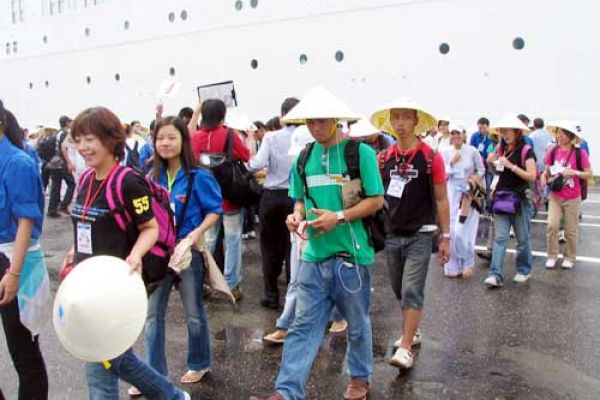
Hikoro Takeuch pays 100,000 yen (about US$1,251) for a tour to Vietnam. To Takeuch, it is cheap as she enjoys shopping in Vietnam. “Shopping in Vietnam is very interesting and exciting,” says Takeuch. “I want to go shopping when traveling in Vietnam. I will come back to Vietnam because the expense is low and I enjoy shopping here.”
Kimika Okuda, another Japanese tourist to Vietnam, is also a fan of shopping in Vietnam. It costs 90,000 yen (about US$1,126) for her trip to Vietnam. But she thinks the price is quite normal as everything is cheap here.
Takeuch and Okuda are two examples of Japanese tourists who spend a lot of time during their tours in Vietnam going shopping besides experiencing specialties and visiting ancient constructions.
They were also two among 33,130 Japanese people coming to Vietnam in July for traveling, business and MICE (meeting, incentive, conference and exhibition), according to the latest report of the Vietnam National Administration of Tourism, or VNAT. The figure is important to Vietnam tourism as it is again on the increase after decreasing in several months due to the earthquake and tsunami in Japan. In March, 43,500 Japanese tourists visited Vietnam. The number of Japanese arrivals then was down to 41,450, 35,056 and 31,204 in April, May and June respectively. According to Vietnam travel companies, the time from April to September is the “low” season of Japanese tourists, and the natural disaster in Japan aggravated the situation. The companies have made their own efforts while waiting for macro-solutions from VNAT and the Government.
Just shopping
Japanese tourists on front of Note Dame Cathedral in Dist. 1, Ho Chi Minh City, on a city tour by cyclo - a favorite means of transport to Japanese tourists in Vietnam
Huynh Minh Son, tour operation manager of the inbound section of Apex Vietnam, a Vietnam travel company specializing in welcoming Japanese tourists, says that every year Apex Vietnam welcomes more than 50,000 Japanese arrivals to Vietnam. However, in March and a few months later, the number of tourists sent from Japanese companies was down by around 10%. As from July, the situation has been better, especially after the company offered promotion programs. Accommodation prices have been down by 20-30%. It also has discounted US$10-20 for each tourist while the quality remains.
However, Son tells Chào! that with a 15-day entry permit, tourists often choose short tours in Vietnam, such as three days in only Saigon, five days in Saigon and Hanoi and eight days across the country. “Due to short tours, they cannot understand well Vietnam’s culture as well as experience a long relax like Westerners,” Son says. “They just like to go shopping, enjoy local food and go to spas.”
Two other big HCM City-based tour operators serving Japanese tourists – Saigontourist and Vietravel – see a slight recovery after the drop. They also have the same idea that due to short stays, Japanese guests just want to enjoy shopping, traveling around the city by cyclo and visiting a few construction works.
Doan Thi Thanh Tra, marketing manager of Saigontourist, says that most of young Japanese tourists go to Vietnam for shopping and visiting beautiful places. But, they don’t spend much as there are not many choices and services for them. Tra adds that to encourage more Japanese tourists to Vietnam that have been down some 40% since March, the company has offered discounts from 5-10% and added more services.
Nguyen Minh Man, acting media manager of HCM City-based tour operator Vietravel, says that since the earthquake and tsunami, the company has seen a decrease from the Japanese market. Vietravel serves some 18,000-20,000 Japanese guests every year. But since March the number of tourists from the market has decreased by 30% compared to the same period last year. “However, as of July, the situation started to be better,” he says, adding that early last month, Vietravel received the first 700 Japanese tourists to Vietnam after the March 11 earthquake and tsunami. “This was good news following the sharp drop. The company will welcome 800-1,000 Japanese tourists in Vietnam travel in the coming months,” he adds.
Expanding entry term
Besides their own efforts, Vietnam travel companies really expect VNAT and the Government to allow Japanese tourists to stay for up to 30 or 60 days without an entry visa, instead of the current 15 days.
Two Japanese tourists choose fashion shoes at a shop in HCM City. Japanese like to go shopping when they travel in Vietnam.
Tra from Saigontourist says that the suggestion targets travelers only. This will help travelers have more time to carry out trans-Vietnam tours, for example. That means they will stay in Vietnam longer and spend more money.
Meanwhile, Son from Apex Vietnam tells Chào! that in the eyes of Japanese tourists, especially the elderly who usually make up a large number in a tour group, Vietnam is seen as a safe place for traveling in many days and a good place for living when retiring. So expanding the entry time for travelers is necessary.
In addition, Apex Vietnam also has suggestions for Hanoi and HCM City. At present, traveling around the capital city’s downtown area that is home to many ancient French-style constructions and Vietnamese traditional culture by cyclo is limited. Sometimes, the company must unexpectedly cancel some legs of their tours. Meanwhile, Hanoi’s government has just allowed traveling around the downtown area within two hours per day. However, the number of cyclos is too small to meet big demands of travel companies. In HCM City, Apex is working with the HCM City Department of Education and Training to open another kind of tour, bringing Japanese students to visit schools in the city.
More Japanese guests targeted
Since June this year, VNAT and the Government have carried out many activities to lure more Japanese travelers back to Vietnam. But, Rome wasn’t built in a day, so it takes a long time to fulfill the plans.
For entry permit, the Ministry of Culture, Sports and Tourism has presented to the Government a proposal to increase the duration of visa-free stay from 15 to 30 or even 60 days for Japanese.
Hoang Thi Diep, deputy head of VNAT, says that Vietnam saw a huge decline in the number of Japanese visitors to the country after the recent natural disaster in Japan, and that’s why Vietnam tourism needs to explore new ways to recover that market.
Apex Vietnam has petitioned VNAT for allowing Japanese tourists to stay for up to 30 or 60 days without an entry visa, instead of the current 15 days.
VNAT, in cooperation with Vietnam Airlines, has announced to launch tourism promotion programs in Japan in hope of attracting more tourists to Vietnam travel.
Nguyen Van Tuan, general director of VNAT, tells local press after a promotion trip to Japan last month that his administration wants to strengthen cooperation with Japan, and has requested Japan to include Vietnam in the list of destinations suggested for Japanese travelers. Besides, some special travel packages for Japanese will be offered in the near future.
Vietnam tourism remains positive of the Japanese market despite a fall in the number of Japanese passengers taking Vietnam Airlines’ flights.
“There were over 268,000 Japanese visitors coming to Vietnam in January-July due to a strong rise in the first quarter (prior to the deadly quake and tsunami), resulting in an increase of 11.7% from last year,” says Tuan.
With efforts from travel companies and VNAT, it is hoped that at least from now till the end of this year, Vietnam tourism will hear much more “Ohayou” (hello) words from Japanese tourists like those of the two ladies mentioned above, Hikoro Takeuch and Kimika Okuda.
Vietnam travel - Vietnam travel companies - Tours in Vietnam
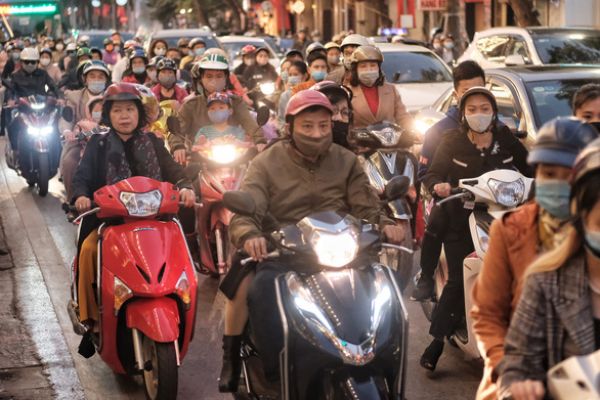
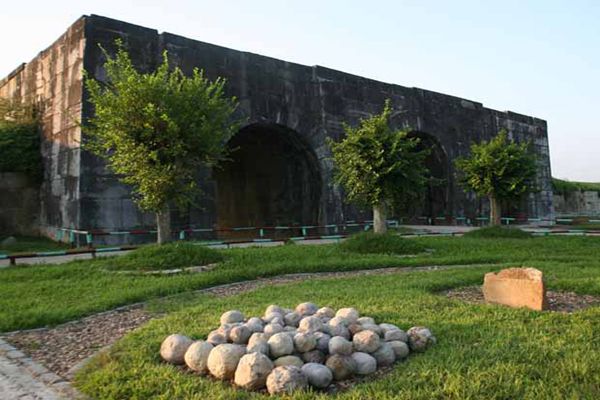
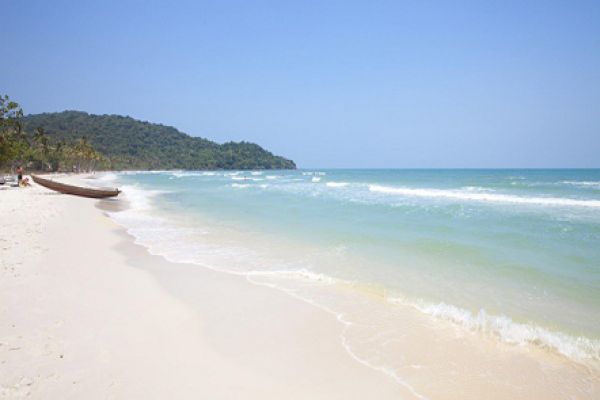
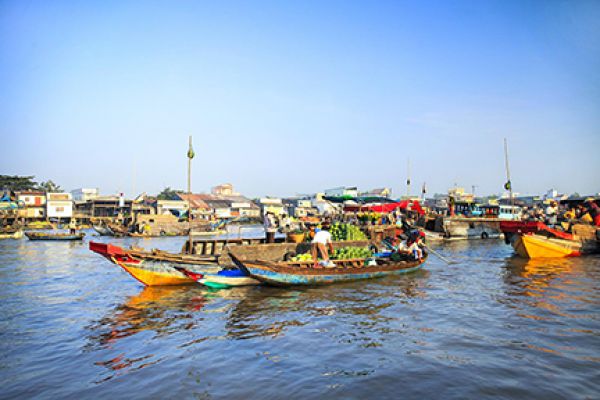
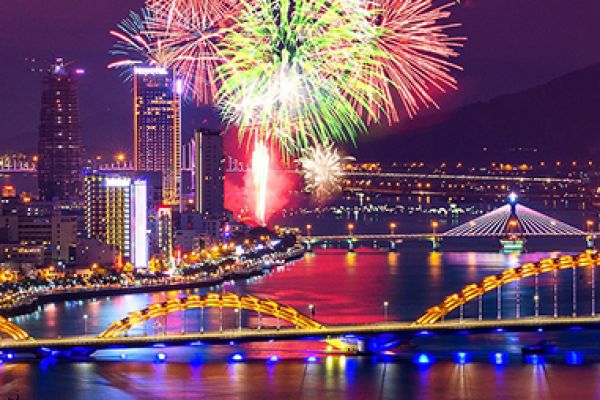

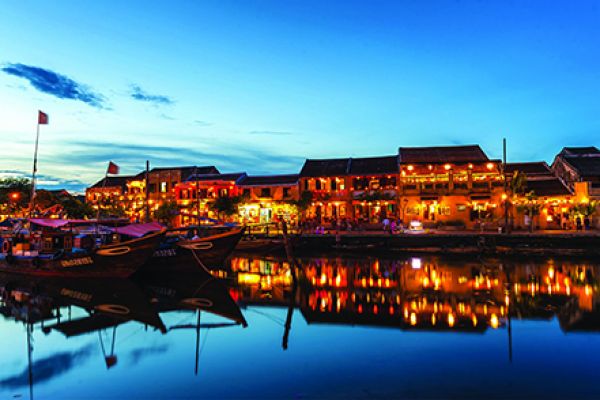
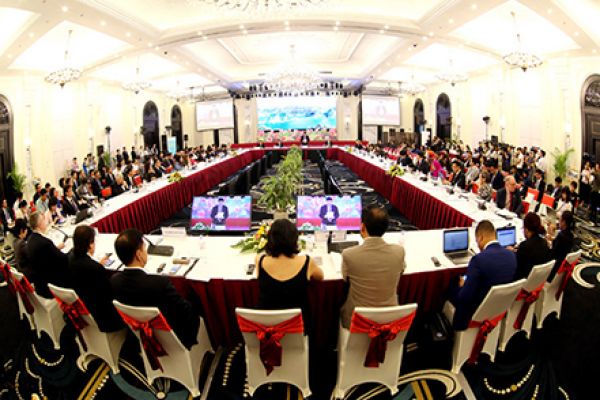
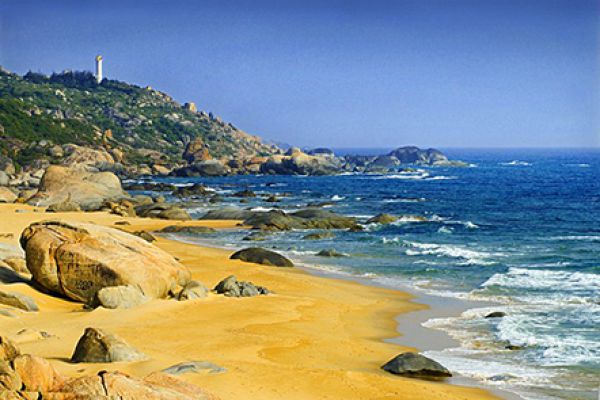
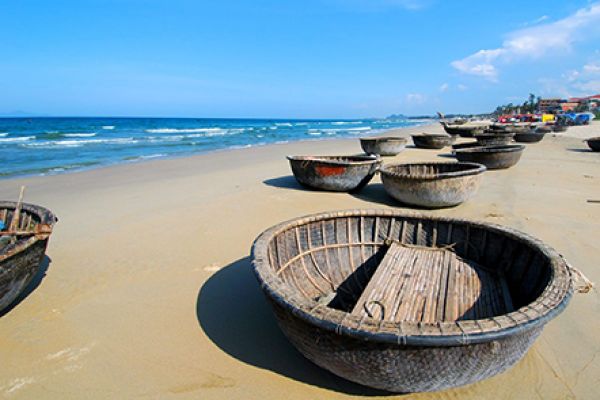
(84-63) 3 826042 – (84-63) 3 511142
No 54 Nguyen Dinh Chieu, Ham Tien Central Mui Ne Beach Binh Thuan Vietnam
523 To Hien Thanh District 10 Ho Chi Minh City Vietnam
Ha Long Halong City Quang Ninh Vietnam
A13 Hung Thong 2 Halong City Quang Ninh Vietnam




